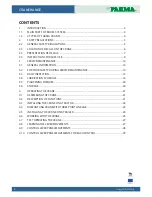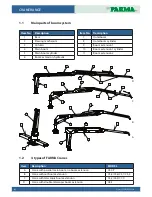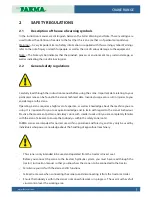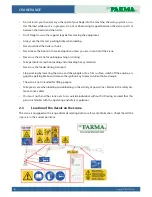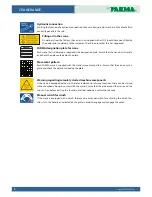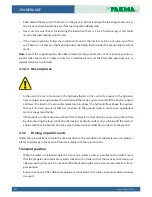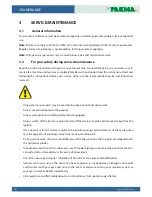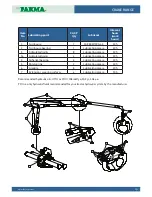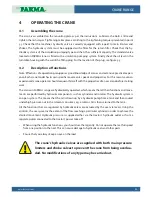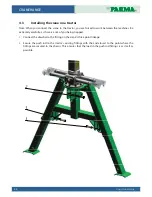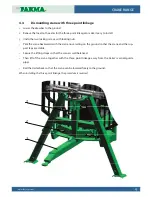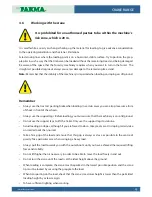
CRANE RANGE
10
© 2015 FORS MW Ltd
• Keep hold of the lever until the load is on the ground. Do not interrupt the lowering movement, as
the risk of overturning will increase if the load should suddenly stop.
• Never use the outer boom for lowering the load when there is a risk of overturning, as this could
result in the load ending up in the cab.
• If the tractor overturns, follow the instructions found in the tractor’s cab. Do not jump out of the
cab. There is a risk that you might end up under the falling load or under the overturning tractor or
crane.
Note: Even if the supporting legs have been lowered to the ground, the risk of overturning is always
greater when the trailer is empty or only has a small load. You must therefore take particular care as
regards stability at such times.
2.5.2.2 Hose ruptures
• In the event of a loss of pressure in the hydraulic fluid or in the event of a rupture in the hydraulic
hoses or pipes running between the controls and the crane, you must switch off the tractor’s engine
and lower the load to the ground immediately. Disconnect the hydraulic flow. Repair the rupture.
Take care to clean up any oil that has run down to the ground. Hand in waste to an appropriate
waste management facility.
• If the rupture is in the main pressure hose from the tractor to the controls, you must stop the oil flow
by disconnecting the lever control for the tractor’s hydraulic outlet or by switching off the tractor’s
engine with the stop button. Also take care to clean up any oil that has run down to the ground.
2.5.3
Driving on public roads
Follow these instructions to avoid the risk of accidents. The manufacturer and dealer are not responsi-
ble for any damage in the event of failure to comply with these instructions.
Transport position
• When the trailer is not loaded, park the crane’s arm system as low as possible on the trailer. Ensure
that the grapple and rotator are securely locked to the trailer so that the crane cannot swing out
sideways during transport. Do not drive off without placing the crane as low as possible in its trans-
port position.
• Ensure that none of the additional equipment connected to the crane can cause accidents during
transport.


